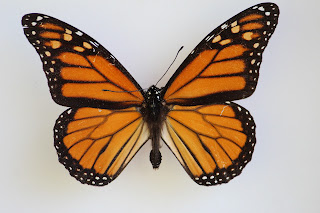Endangered Species? What Does This Mean for the Monarchs?
Very recently, the International Union for Conservation of Nature (IUCN) added the Monarch Butterfly - specifically our migratory United States subspecies, Danaus plexippus plexippus - to their Red List of Endangered Species.
What does this mean exactly? It means that the IUCN found, through gathering and analyzing data that Monarchs are considered to be in very high risk of extinction in the wild.
IUCN is a membership union founded in 1948 that consists of over 1,400 government and civil society organizations. It is NOT a regulatory agency. In the United States, the United States Fish and Wildlife Service and the National Marine Fisheries Service have the authority to proclaim a species endangered and uphold the rules and guidlines of the Endangered Species Act of 1973. USFWS will not vote again on the status of the Monarch until 2024.While IUCN Is not regulatory or have any jurisdiction over what property owners can and cannot do to conserve Monarchs, this designation can be influential in Monarch conservation. At the very least, it brings some media attention to the "Plight of the Monarchs".
It is without denial that Monarch populations have decreased over time. This is due to several factors, and many scientists agree that the primary factor is a reduction of overwintering sites in Mexico due to deforestation. Other contributing factors include pesticide exposure, lack of food sources in the United States, and land management practices reducing milkweed.
Milkweed is the host plant for the caterpillars to grow and feed. Milkweed is also a weed - decades ago, it was common to find milkweed along roadsides and adjacent to agricultural fields. With the need to use every bit of land, we've crept into the spots milkweed grows. We've also built neighborhoods and reduced the overall spaces milkweed naturally grew.
How can YOU help Monarchs? Plant milkweed! While there is plenty of controversy over which milkweed to grow, unfortunately native milkweed can be tricky. Tropical milkweed tends to grow better and look nicer, but can accumulate spores of a parasitic protzoan, Ophryocystis ekeltroscirrha (OE) that cause major issues for Monarchs. ALL milkweed can contain these spores, but tropical blooms longer, attracts more Monarchs and more is deposited by Monarchs onto tropical milkweed - thus more spores. The best solution to this major issue is to CUT YOUR MILKWEED DOWN before the end of September. No matter if it's blooming or not, cut it down! If not, you let more Monarchs stop, drop off and pick up OE and even lay eggs that will not survive the winter. **Note - I am very much skimming the surface of the OE issue, but that's for another blog!
The thing that speaks to me the loudest in this situation with the Monarchs is how easily an animal that most Texas visually know, respect, and appreciate can decline in numbers so great that any organization can pronounce them as endangered. We've known this was an issue for many years and we've still let it happen. And while Monarchs are not great or important pollinators, they are the canary in the natural coal mine, telling us to get our act together before something much more environmentally beneficial is in the same predicament.
So this fall, when you are thinking about what you want your garden to look like, consider tossing out or native milkweed seeds or finding a spot to plant some tropical milkweed (just don't forget to cut them down in September!). Let's do something to help our Texas Insect!




Comments